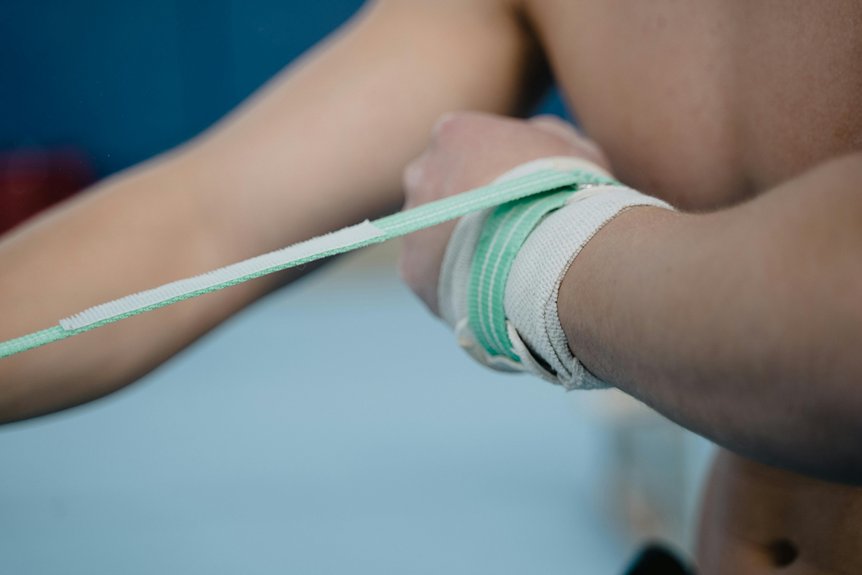
When you're hitting the gym, knowing when to use wrist support can make a significant difference in your performance and safety. Whether you're lifting heavy weights or tackling complex movements, wrist support can provide the stability you need. If you're recovering from an injury or trying to prevent overuse strain, it's even more crucial. So, what factors should you really consider before strapping on that support?
Lifting Heavy Weights
When you're lifting heavy weights, it's crucial to protect your wrists from potential strain or injury. Your wrists bear a significant load during exercises like bench presses, deadlifts, and overhead lifts.
Without proper support, you risk overextending or straining them, which can sideline your workouts. Using wrist supports can provide the stability and compression needed to maintain proper alignment and reduce the risk of injury.
They can also help you lift heavier weights more confidently, allowing you to focus on your form rather than worrying about wrist pain.
Performing Complex Movements
While performing complex movements, your wrists are often put to the test, requiring both strength and stability. Exercises like cleans, snatches, and overhead presses demand a high level of coordination, which can put immense strain on your wrists.
If you notice discomfort or instability during these movements, consider using wrist support to enhance your performance. Proper wrist support can provide the stability you need, allowing you to focus on your technique rather than worry about potential strain. It helps maintain alignment and reduces the risk of overextending your wrists.
Ultimately, when tackling complex exercises, prioritizing wrist health with the right support can lead to better form, improved strength, and a more effective workout overall.
Recovering From Injury
Recovering from an injury can be challenging, especially when it comes to your wrists, which play a crucial role in many gym exercises. You might feel frustrated with your progress, but using wrist support can help stabilize the area and provide comfort during your recovery.
It's essential to listen to your body; if you experience pain, don't push through it. Instead, focus on rehabilitation exercises that strengthen your wrists without causing further strain.
Gradually reintroducing movements while wearing support can build confidence and reduce the risk of re-injury. Remember, consult a healthcare professional for personalized advice and a tailored recovery plan.
Prioritize healing, and soon you'll be back to your usual routine stronger than before.
Preventing Overuse Strain
To prevent overuse strain on your wrists, it's crucial to pay attention to how you're using them during workouts.
Start by maintaining proper form in exercises that require wrist engagement, like push-ups or weightlifting. If you're feeling discomfort, it's a sign to reassess your technique or the weights you're using.
Incorporate wrist mobility and strengthening exercises into your routine to build resilience. Don't forget to give yourself adequate rest between workouts, allowing your wrists to recover.
Using wrist supports can also help stabilize your joints, especially during heavy lifts or high-repetition sets.
Always listen to your body; if pain persists, consult a professional to avoid long-term injury and ensure you're training safely and effectively.
Conclusion
In conclusion, using wrist support in the gym can make a big difference in your performance and safety. Whether you're lifting heavy weights, tackling complex movements, recovering from an injury, or trying to prevent overuse strain, it's smart to prioritize wrist stability. By incorporating wrist support when needed, you'll enhance your workout experience, maintain proper alignment, and focus on your form, allowing you to train confidently and effectively. Don't hesitate to gear up for better results!




